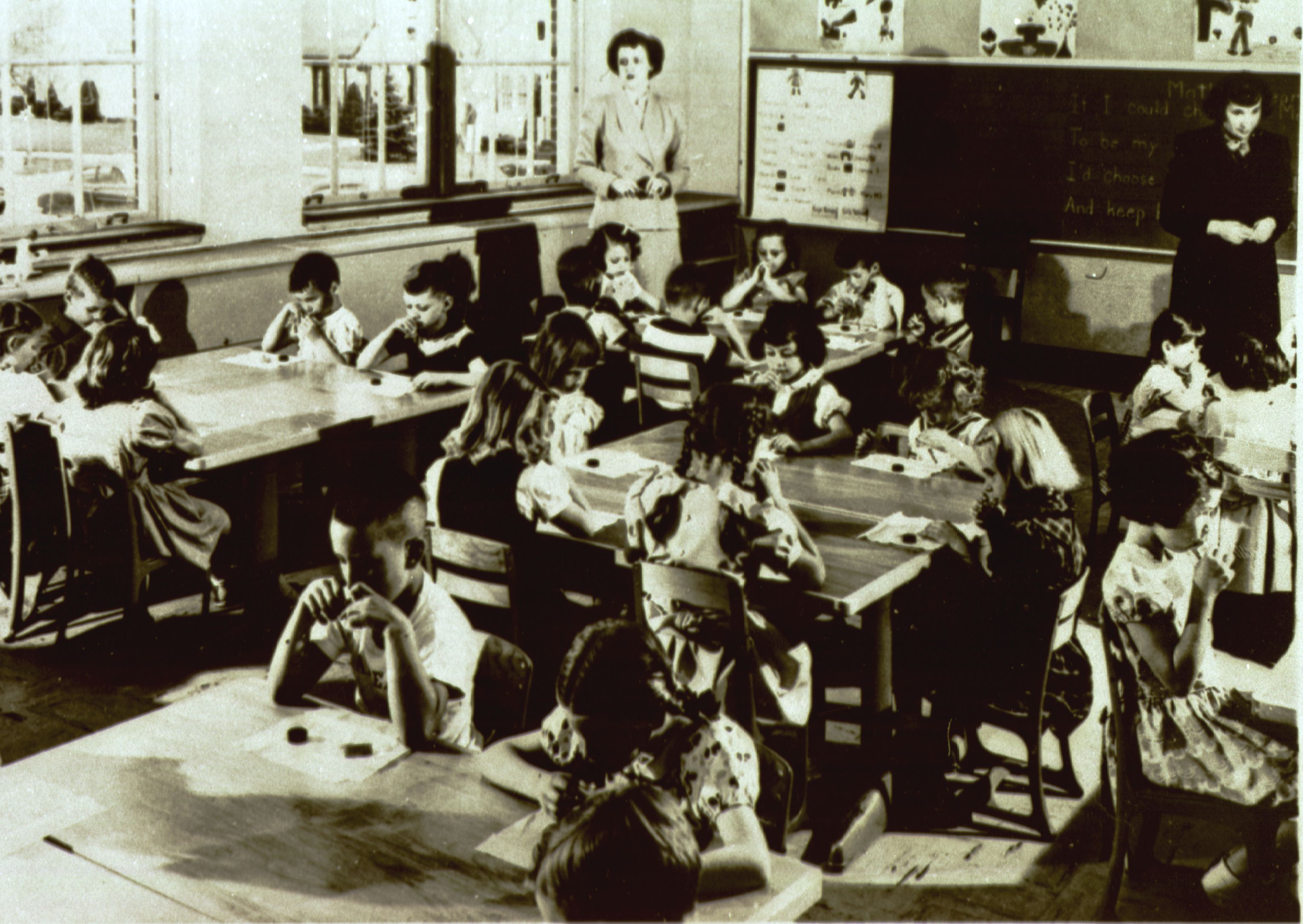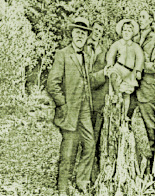The Story of Fluoridation
It started as an observation, that soon took the shape of an idea. It ended, five decades later, as a scientific revolution that shot dentistry into the forefront of preventive medicine. This is the story of how dental science discovered-and ultimately proved to the world-that fluoride, a mineral found in rocks and soil, prevents tooth decay. Although dental caries remains a public health worry, it is no longer the unbridled problem it once was, thanks to fluoride.
A Mysterious Disorder
Fluoride research had its beginnings in 1901, when a young dental school graduate named Frederick McKay left the East Coast to open a dental practice in Colorado Springs, Colorado. When he arrived, McKay was astounded to find scores of Colorado Springs natives with grotesque brown stains on their teeth. So severe could these permanent stains be, in fact, sometimes entire teeth were splotched the color of chocolate candy. McKay searched in vain for information on this bizarre disorder. He found no mention of the brown-stained teeth in any of the dental literature of the day. Local residents blamed the problem on any number of strange factors, such as eating too much pork, consuming inferior milk, and drinking calcium-rich water. Thus, McKay took up the gauntlet and initiated research into the disorder himself. His first epidemiological investigations were scuttled by a lack of interest among most area dentists. But McKay persevered and ultimately interested local practitioners in the problem, which was known as Colorado Brown Stain.
A Fruitful Collaboration
McKay's first big break came in 1909, when renowned dental researcher Dr. G.V. Black agreed to come to Colorado Springs and collaborate with him on the mysterious ailment. Black, who had previously scoffed that it was impossible such a disorder could go unreported in the dental literature, was lured West shortly after the Colorado Springs Dental Society conducted a study showing that almost 90 percent of the city's locally born children had signs of the brown stains. When Black arrived in the city, he too was shocked by the prevalence of Colorado Brown Stain in the mouths of native-born residents. He would write later:
"I spent considerable time walking on the streets, noticing the children in their play, attracting their attention and talking with them about their games, etc., for the purpose of studying the general effect of the deformity. I found it prominent in every group of children. One does not have to search for it, for it is continually forcing itself on the attention of the stranger by its persistent prominence. This is much more than a deformity of childhood. If it were only that, it would be of less consequence, but it is a deformity for life."
Black investigated fluorosis for six years, until his death in 1915. During that period, he and McKay made two crucial discoveries. First, they showed that mottled enamel (as Black referred to the condition) resulted from developmental imperfections in children's teeth. This finding meant that city residents whose permanent teeth had calcified without developing the stains did not risk having their teeth turn brown; young children waiting for their secondary set of teeth to erupt, however, were at high risk. Second, they found that teeth afflicted by Colorado Brown Stain were surprisingly and inexplicably resistant to decay. The two researchers were still a long way from determining the cause of Colorado Brown Stain, but McKay had a theory tucked away in the back of his head. Maybe there was, as some local residents suggested, an ingredient in the water supply that mottled the teeth? Black was skeptical; McKay, though, was intrigued by this theory's prospects.
The water-causation theory got a gigantic boost in 1923. That year, McKay trekked across the Rocky Mountains to Oakley, Idaho to meet with parents who had noticed peculiar brown stains on their children's teeth. The parents told McKay that the stains began appearing shortly after Oakley constructed a communal water pipeline to a warm spring five miles away. McKay analyzed the water, but found nothing suspicious in it. Nonetheless, he advised town leaders to abandon the pipeline altogether and use another nearby spring as a water source.
McKay's advice did the trick. Within a few years, the younger children of Oakley were sprouting healthy secondary teeth without any mottling. McKay now had his confirmation, but he still had no idea what could be wrong with the water in Oakley, Colorado Springs, and other afflicted areas. The answer came when McKay and Dr. Grover Kempf of the United States Public Health Service (PHS) traveled to Bauxite, Arkansas-a company town owned by the Aluminum Company of America-to investigate reports of the familiar brown stains. The two discovered something very interesting: namely, the mottled enamel disorder was prevalent among the children of Bauxite, but nonexistent in another town only five miles away. Again, McKay analyzed the Bauxite water supply. Again, the analysis provided no clues. But the researchers' work was not done in vain.
McKay and Kempf published a report on their findings that reached the desk of ALCOA's chief chemist, H. V. Churchill, at company headquarters in Pennsylvania. Churchill, who had spent the past few years refuting claims that aluminum cookware was poisonous, worried that this report might provide fresh fodder for ALCOA's detractors. Thus, he decided to conduct his own test of the water in Bauxite-but this time using photospectrographic analysis, a more sophisticated technology than that used by McKay. Churchill asked an assistant to assay the Bauxite water sample. After several days, the assistant reported a surprising piece of news: the town's water had high levels of fluoride. Churchill was incredulous. "Whoever heard of fluorides in water," he bellowed at his assistant. "You have contaminated the sample. Rush another specimen."
Shortly thereafter, a new specimen arrived in the laboratory. Churchill's assistant conducted another assay on the Bauxite water. The result? Photospectrographic analysis, again, showed that the town's water had high levels of fluoride tainting it. This second and selfsame finding prompted Churchill to sit down at his typewriter in January, 1931, and compose a five-page letter to McKay on this new revelation. In the letter, he advised McKay to collect water samples from other towns "where the peculiar dental trouble has been experienced... We trust that we have awakened your interest in this subject and that we may cooperate in an attempt to discover what part 'fluorine' may play in the matter."
McKay collected the samples. And, within months, he had the answer and denouement to his 30-year quest: high levels of water-borne fluoride indeed caused the discoloration of tooth enamel.
New Questions Emerge
Hence, from the curious findings of Churchill's lab assistant, the mystery of the brown stained teeth was cracked. But one mystery often ripples into many others. And shortly after this discovery, PHS scientists started investigating a slew of new and provocative questions about water-borne fluoride. With these PHS investigations, research on fluoride and its effects on tooth enamel began in earnest. The architect of these first fluoride studies was Dr. H. Trendley Dean, head of the Dental Hygiene Unit at the National Institute of Health (NIH). Dean began investigating the epidemiology of fluorosis in 1931. One of his primary research concerns was determining how high fluoride levels could be in drinking water before fluorosis occurred. To determine this, Dean enlisted the help of Dr. Elias Elvove, a senior chemist at the NIH. Dean gave Elvove the hardscrabble task of developing a more accurate method to measure fluoride levels in drinking water. Elvove labored long and hard in his laboratory, and within two years he reported back to Dean with success. He had developed a state-of-the-art method to measure fluoride levels in water with an accuracy of 0.1 parts per million (ppm). With this new method in tow, Dean and his staff set out across the country to compare fluoride levels in drinking water. By the late 1930s, he and his staff had made a critical discovery. Namely, fluoride levels of up to 1.0 ppm in drinking water did not cause enamel fluorosis in most people and only mild enamel fluorosis in a small percentage of people.
Proof That Fluoride Prevents Caries
This finding sent Dean's thoughts spiraling in a new direction. He recalled from reading McKay's and Black's studies on fluorosis that mottled tooth enamel is unusually resistant to decay. Dean wondered whether adding fluoride to drinking water at physically and cosmetically safe levels would help fight tooth decay. This hypothesis, Dean told his colleagues, would need to be tested.In 1944, Dean got his wish. That year, the City Commission of Grand Rapids, Michigan-after numerous discussions with researchers from the PHS, the Michigan Department of Health, and other public health organizations-voted to add fluoride to its public water supply the following year. In 1945, Grand Rapids became the first city in the world to fluoridate its drinking water.The Grand Rapids water fluoridation study was originally sponsored by the U.S. Surgeon General, but was taken over by the NIDR shortly after the Institute's inception in 1948. During the 15-year project, researchers monitored the rate of tooth decay among Grand Rapids' almost 30,000 schoolchildren. After just 11 years, Dean- who was now director of the NIDR-announced an amazing finding. The caries rate among Grand Rapids children born after fluoride was added to the water supply dropped more than 60 percent. This finding, considering the thousands of participants in the study, amounted to a giant scientific breakthrough that promised to revolutionize dental care, making tooth decay for the first time in history a preventable disease for most people.
A Lasting Achievement
Almost 30 years after the conclusion of the Grand Rapids fluoridation study, fluoride continues to be dental science's main weapon in the battle against tooth decay. Today, just about every toothpaste on the market contains fluoride as its active ingredient; water fluoridation projects currently benefit over 200 million Americans, and 13 million schoolchildren now participate in school-based fluoride mouth rinse programs. As the figures indicate, McKay, Dean, and the others helped to transform dentistry into a prevention-oriented profession. Their drive, in the face of overwhelming adversity, is no less than a remarkable feat of science-an achievement ranking with the other great preventive health measures of our century.
Fluoride & Dental Health Research from NIDCR
September 2024


